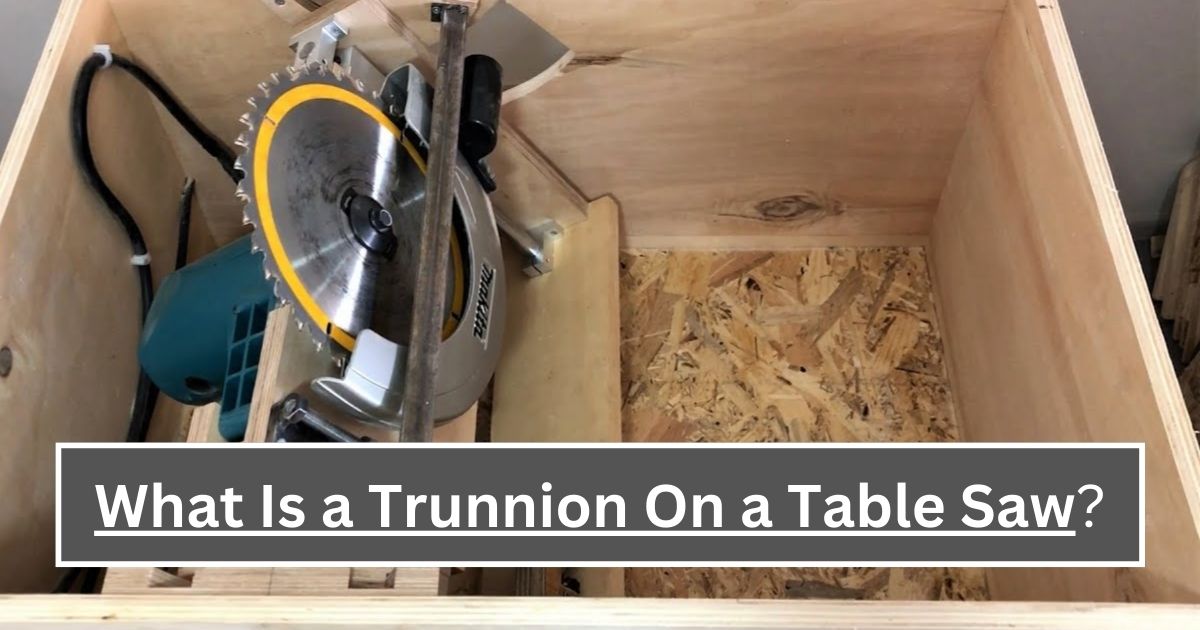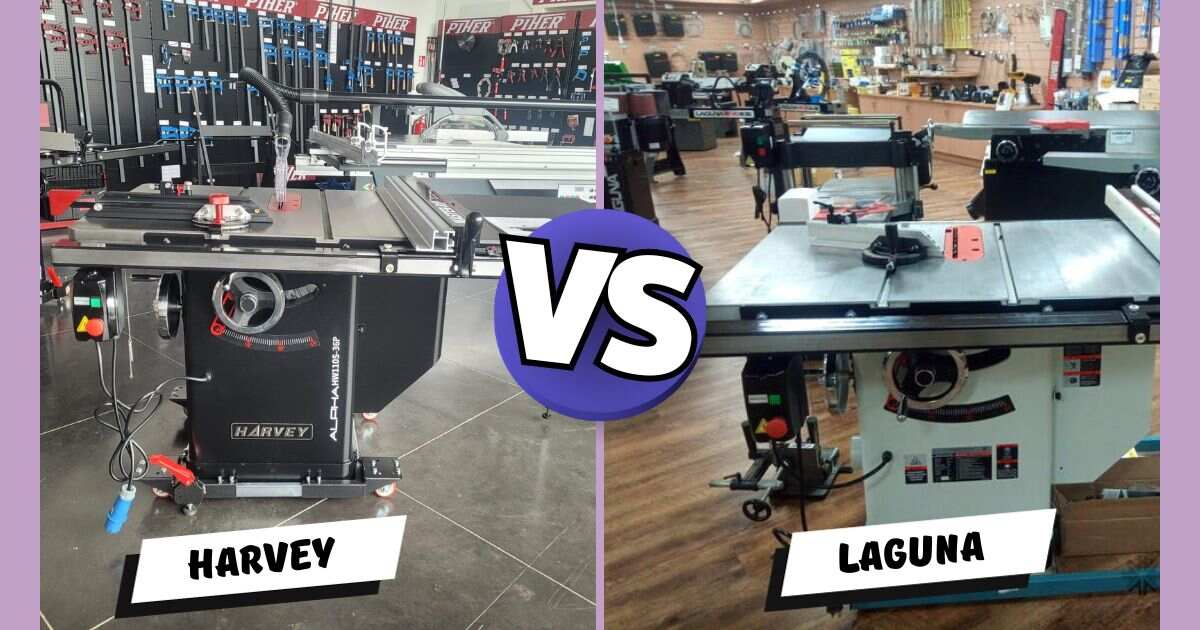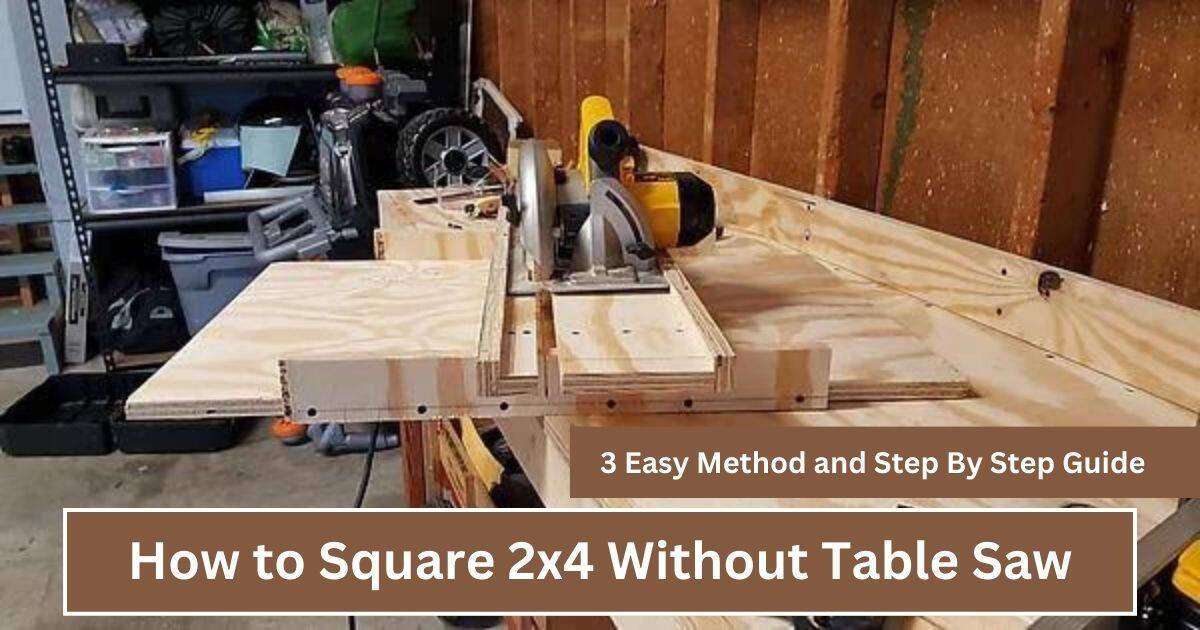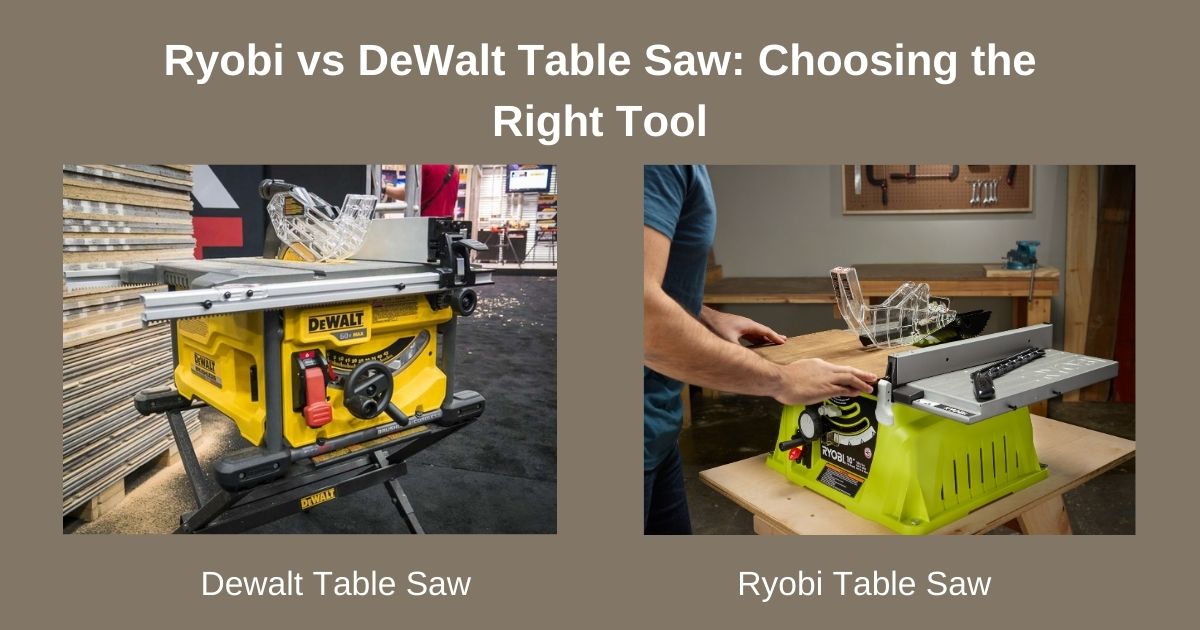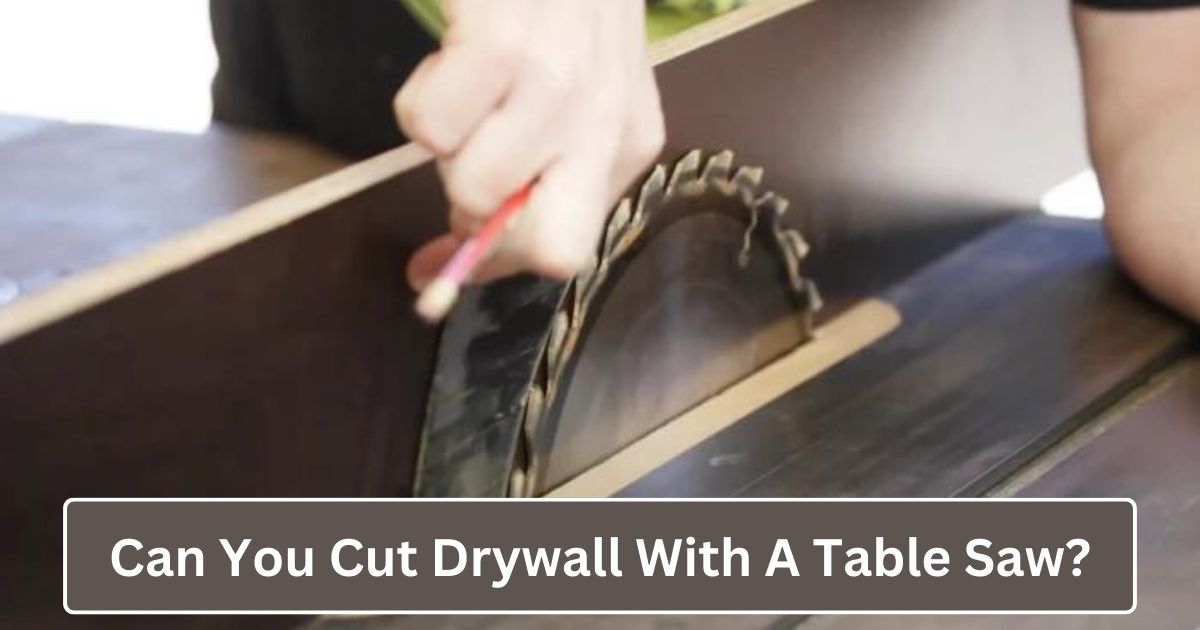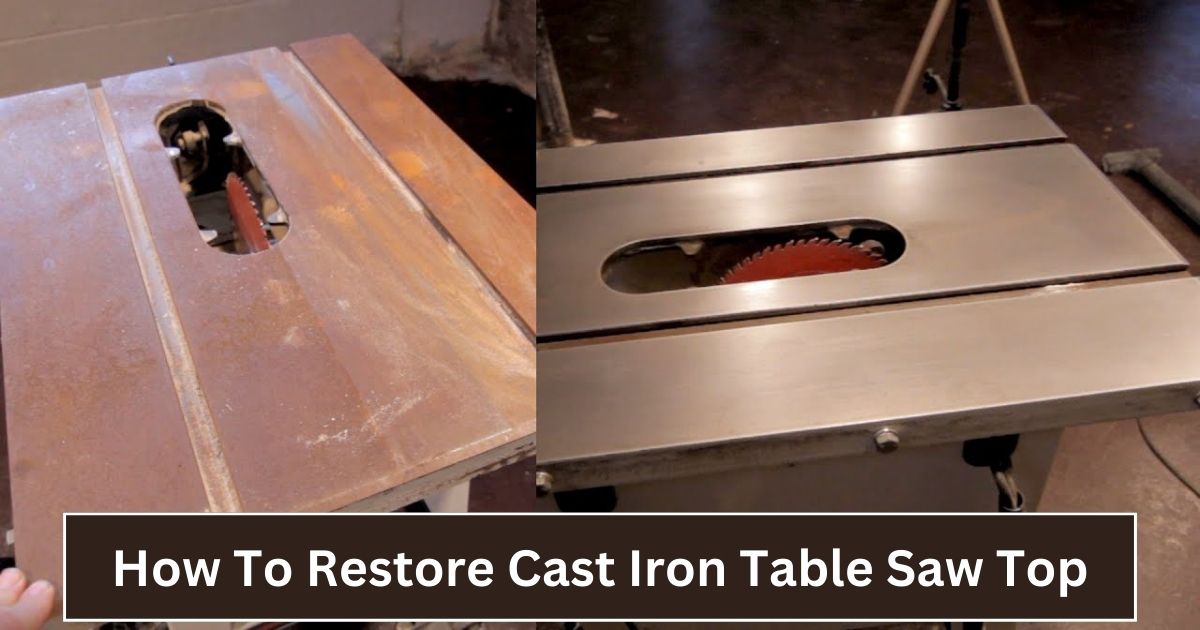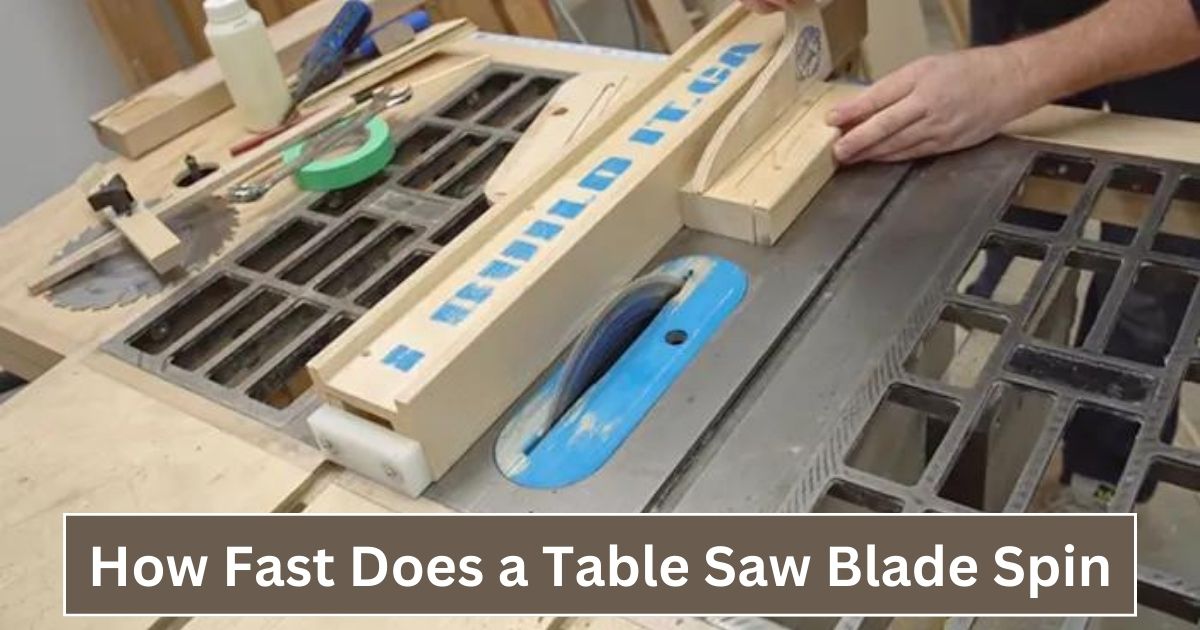Woodworking precision and productivity depend on the table saw. A variety of delicate components work together to slice wood with precision and delicacy. Trunnions table saw are particularly important. What is a trunnion on a table saw and why is a table saw’s trunnion essential to woodworking?
A table saw has a key mechanical part called a trunnion. Its job is to hold and control the arbor and blade assembly. As a pivot point, the trunnion makes sure that cutting processes are stable and move in a precise way.
In this look at the trunnion on a table saw, We’ll explain how it was made, what it does, and how it takes whittling to a new level of precision and skill.
What Is a Trunnion On a Table Saw and table saw trunnion adjustment:
A trunnion is a piece of equipment that connects a tool or machine to something else. The table saws trunnion is attached to the sides of the base.
It lets the blade be changed in ways like up, down, and tilt. The part of the saw that links the table to the cabinet is called the trunnion. The saw blade and fence typically ride on a ball bearing in the trunnion of a table saw.
The trunnion is part of a table saw that is used to connect the arbor to the table’s bottom. It is the main adjustment point that lines up the saw blade with the miter slot on the table of the saw.
It is also used to change the angle of the Blade. The trunnion is one of the most important parts of a table saw.
The blade moves up and down because of the device that looks like an axle. Even though it looks hard, it’s easy to figure out how it works with just a few simple tries. Once you understand how the trunnion works, you’ll learn that taking care of your table saw isn’t as hard as you thought.
The Uses of Trunnions Table Saw:

The functionality of the trunnion adds to the table saw’s total performance and versatility, making it an important part of woodworkers of all skill levels. When used on a table saw, it does a lot of important things. These things are:
Support and Stability:
One of the main jobs of a trunnion is to give the arbor and blade combination support and stability.
It works as a pivot point that keeps the arbor carriage firmly in place and keeps the blade steady while the machine is running. This steadiness is important if you want to cut wood accurately and cleanly.
Blade Tilt and Angle Changes:
The trunnion lets the blade tilt, which lets you cut bevels at different angles. By changing the trunnion, woodworkers can make precise cuts at angles, such as chamfers, mitered edges, or complex bevel profiles.
The trunnion’s ability to control how the blade tilts makes it versatile and open up more ways to work with wood.
Safety and Control:
The table saw is safer and easier to control when the trunnion device is well-made. It keeps the blade in the right place so it doesn’t move by chance or get out of line while it’s being used. This steadiness and control help keep the user safe and reduce the chance of accidents like kickbacks.
Precision and Accuracy:
The ability of the trunnion to keep the blades aligned and stable has a direct effect on how precise and accurate the cuts are. A strong, well-adjusted trunnion makes sure that the blade stays parallel to the miter slots and lets you make small changes to get the cut you want.
This accuracy is especially important when working on complex wooden projects or when trying to make joints that look like they belong together.
Blade Changes:
The trunnion design often has quick-release mechanisms or blade change features that make it easy to change the blade. This lets woodworkers change the saw blade quickly and easily when they need to. This saves time and effort when switching between projects.
Vibration dampening:
A well-made trunnion can help reduce tremors that happen while the machine is running. This makes the whole thing quieter and makes it easier to cut, which leads to better and more accurate cuts.
Compatibility with Accessories:
Most trunnion systems are made to work with different table saw tools and accessories. These can include dado blade sets, additional fences, sleds, and other tools that make the table saw more useful and flexible.
Trunnions table saw often have parts that can be moved so that they can be fine-tuned and maintained. This includes adjusting how the blades are lined up, lubrication spots and other parts that help the table saw work better and last longer.
Standard in the Industry:
Trunnions have become a standard part of table saws because they are so important for getting exact and safe cuts. Many professionals and amateurs like table saws with a trunnion because they are reliable, precise, and can do a lot of different things.
How Are Trunnions Aligned To The Blade?

There are two ways to line up a blade’s trunnions. A trunnion pin is one way to do this. Set screws are the second way to do this.
Trunnion Pin:
With trunnion pins, the trunnion is attached to the blade. A trunnion pin is a small metal rod that goes through the hole in the middle of the trunnion. This lets the trunnion turn in any direction.
When you use a trunnion pin, make sure that the part doesn’t stick or rub. If there is binding or friction, the trunnion pin won’t let the trunnion move easily.
Lubricate the trunnion pin to keep it from sticking. By greasing the trunnion pin, you can reduce the amount of friction. The best way to line up trunnions is to use a trunnion pin. But trunnion pins shouldn’t be used on blades that weigh more than 100 pounds. Use a set screw instead for blades that weigh more.
Screw in:
Set screws are used to attach a blade to the trunnion. A set screw is a threaded device that holds the trunnion to another part of the blade. Set screws should only be used after the trunnion has been aligned with its hole.
Make sure the trunnion is lined with the blade before you use a set screw. If the trunnion is put in the wrong place, it could damage the blade. Once the trunnion is lined up with the right slot, you can use a set screw to hold it in place.
Make sure to tighten the set screw until it fits snugly against the trunnion. This keeps the trunnion from moving to one side or the other.
Remove any slack from the trunnion after tightening the set screw. If you tighten the set screw too much, the trunnion could get stuck.
Maintenance on the Trunnion of the Table Saw:

Without taking care of your table saw, you won’t be able to use it for long. Over time, it gets dirty and starts to rust. But if you take care of the trunnion, it will run smoothly.
Mainly, you need to clean and grease it well. We’ve said more about that here.
Cleaning:
So, how do we clean the trunnion on my table saw? First, it needs to be taken apart in some ways. Now, spray some liquid wrench on the ground. Here, WD40 can be used to clean.
Make sure to soak it for at least half an hour. You can rinse with Naptha. Keep doing this over and over until all of the goop is gone.
Lubrication:
Next, tell me how to grease the trunnion of my table saw. There are three ways to grease something. These are wax, graphite or white lithium, and old oil. Let’s talk about all three of them now.
The most usual way to lubricate is with wax. It doesn’t collect much dust, which is why. Well, sure it doesn’t. But it won’t keep your trunnion and gears oiled for a long time, which is a problem.
White lithium or graphite are two other things you can use. It’s easy to spray, so you can get into all the hard-to-reach places. But the same problem applies to this as to wax.
Last, you can use oil from the past. If you use this, your gears will stay slippery for a much longer time. So, you won’t have to go through the process too often. Even though a little more dust will stick to it than usual.
Bottom Line:
A trunnion is a key part of a table saw that makes it stable, accurate, and useful for many different kinds of woodworking.
It supports and controls the assembly of the arbor and blade so that exact cuts and bevel adjustments can be made.
The ability of the trunnion to stay in place, make bevel cuts easier, and allow for fine adjustments improves the overall performance and powers of the table saw. This helps woodworking projects turn out well. If you have a table saw, you should now know what a Trunnion is.
FAQs
What is a Table Saw’s “Arbor”?
A table saw’s blade is held in place by a piece of wood called an arbor. An arbor is a kind of wheel that holds your table saw’s blade in place. Most people want one so they can switch out blades quickly and easily, which saves time.
How Does the Trunnion Work in a Saw?
A trunnion is the part of the saw that ties the blade to the arbor. In the saw business, there are two kinds of trunnions. One kind is called a “trunnion pin” and the other a “pinless trunnion.”
The blade can move up and down in relation to the stem with both types of trunnions. But the two kinds are not exactly the same.
Most trunnion pins are made of steel, and they are screwed into the frame. Most pinless trunnions are made of metal, and bolts hold them to the saw’s arbor.
How to Change Out a Trunnion Bearing?
A trunnion has two kinds of bearings:
Ball bearings and Roller bearings. Most situations call for ball bearings. They don’t last as long as roller bearings, but they cost less. Most of the time, roller bearings are used in high-end tools where there is less friction.
If you want to replace a trunnion bearing, you’ll need to take out the shaft first. Loosen the nut keeping the shaft in place and slide the shaft off the trunnion to take it out. Next, remove the old bearing with a socket wrench. Replace the bearing and tighten the nut. Replace the shaft and put the trunnion back together. You’re done!
Related Posts:
- Can you Cut Aluminum with a Table Saw
- Best Table Saw Blades Reviewed
- How to Cut a 60 Degree Angle on a Table Saw
- How To Cut More than 45 Degrees on a Table Saw
- Cabinet Saw vs Table Saw
- How to Make Raised Panel Cabinet Doors on a Table Saw
- How to Reset Overload on Table Saw?
- What is a Riving Knife on a Table Saw?
- How to Make Shiplap Boards with a Table Saw
- Best Cabinet Table Saw: (Top Pick and Reviews)
